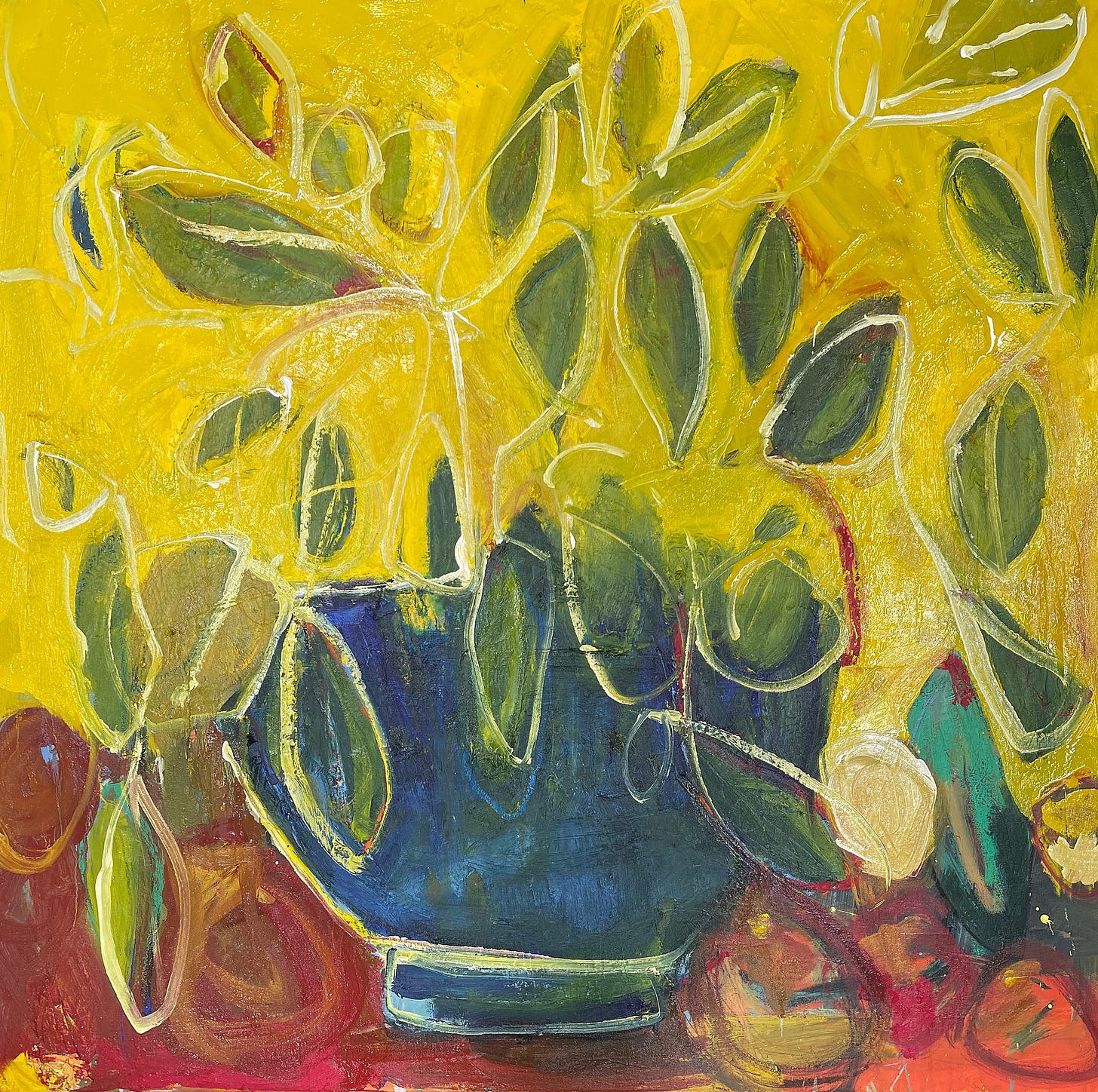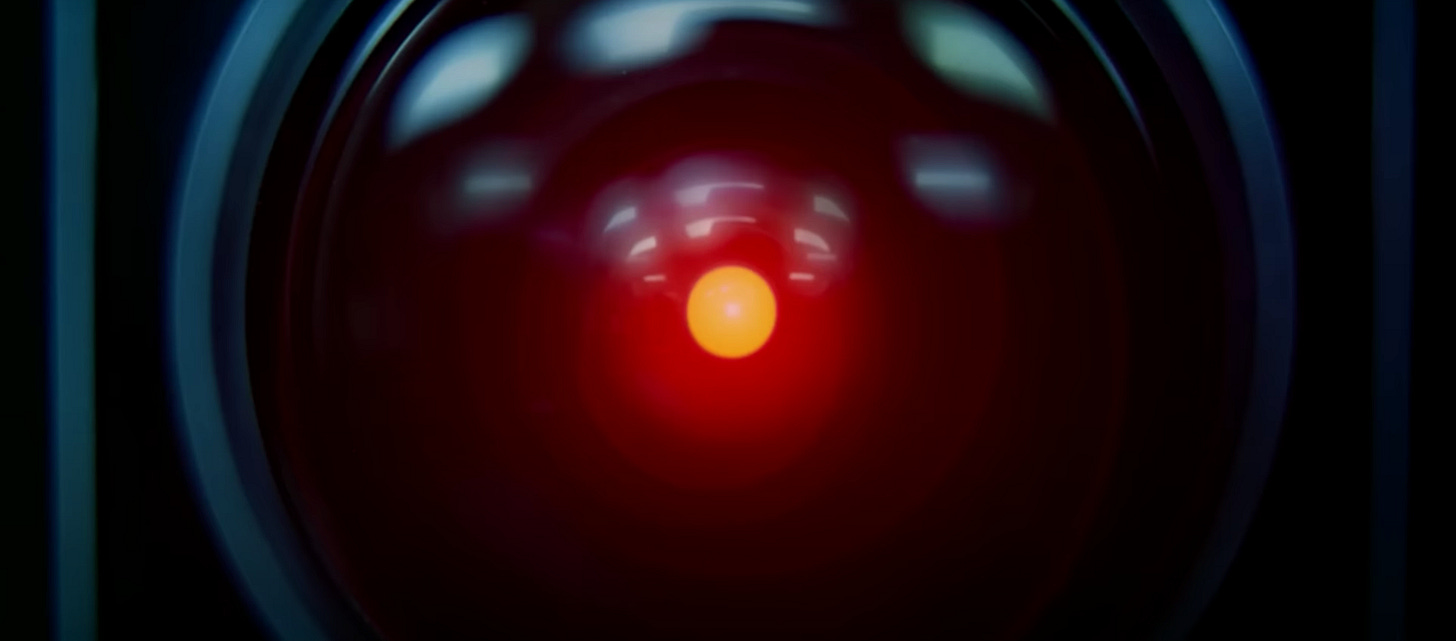Only humans can be artists
What does it profit a man if he gain the whole world but lose his soul?
People are unities of body and soul. This unity is not incidental, but is fundamental to the human condition. To be able to communicate the transcendentals (by which I mean, clearly non-material but good things, like love, or beauty), we require the material. This essay argues that only humans can create art, because art is not merely a philosophical statement, but a communication between subjects who have encountered the transcendentals.
We are not only our material existence. Despite cellular metabolism constantly switching out our composite atoms, common sense tells us that the “I” who exists in seven years’ time shares some kind of continuity of being with the “I” who is existing right now. This “I,” just like the Ship of Theseus, is indefinable, existing beyond what we can explain materially. My existence transcends the materials that make me up.
Yet we only encounter the most profoundly and transcendently human experiences through that material medium of the body. Even more abstract transcendental experiences are, for us as humans, inseparably related to material experiences. Say, existential dread: We can feel our heart beating, our skin sweating, our stomach churning. Only somebody who has experienced this embodiment of a feeling can truly understand the human condition. The material elements are incomprehensible from purely transcendental knowledge about them. Perhaps this is why the poet Yeats said that “Bodily decrepitude is wisdom.” The artist must ripen into transcendental wisdom through the material living of life. His authority isn’t just drawn from a talent with abstractions or with a medium, but from truly having engaged with life.
Since we exist in this material realm, we also often feel we can best express something transcendent through a material medium. How often have you felt the need to engage in a material act (to hug, to cry, to converse) to express something that isn’t material? We act physically on our values, and consider people who don’t to somehow be contradictory. Embodiment is the way that we bring the transcendental into our human condition. Transcendental knowledge cannot be separated from the material acts by which it is expressed.
Art is defined by the physical communication of the transcendental of beauty. Art can be a painful sadness, expressed through the physical words of a poem; a rekindled love, expressed through the sound waves of a song; or the sublimity of nature, expressed through the atoms in a painting. Regardless of what form the art takes, each expresses the transcendental materially.
Yet, just like with our bodies, the material existence is not the entirety of art. A perfect copy of a Van Gogh is still not a Van Gogh. The copy lacks nothing material, but it still isn’t the same thing. Like the Ship of Theseus, or like me, the Van Gogh painting carries an indefinable existence that transcends its material atoms.
Part of the beauty of seeing an actual Van Gogh is the feeling that the painter himself has touched that same canvas. It makes no difference, of course, to the materials of the painting, but it does make a difference to the transcendent idea we have of, through this physical medium, encountering the transcendent individual who created it. We care about the immaterial idea of there being an artist on the other side of the artwork, of our engagement with the artwork being an encounter with a real person behind it. We are not only looking at the work but, rather, at the artistic genius, the guide, the friend, who created it.
This is why we are often turned off when we learn about an artist being a bad person. I was, for example, disturbed to read about the sexual impropriety of Marion Zimmer Bradley, who writes a series of Arthurian novels that I read as a teenager. Specifically, this is because her works are rather sexual in content. I am repulsed by the thought of somebody with such a disturbed material expression of sexuality communicating to me about the transcendent meaning of sex. To all material intents, they may be good works, with which a reader cannot find fault. However, now that we know this author has guided herself into such a bad place, we don’t want to receive her guidance (through her works) anymore.
Going to art is like going to a friend for advice. We read a poem about love so as to learn, from a specific person, about love. Therefore, it is that poet’s individual experiences with love that qualify his poetry as being valuable on that topic. I have previously argued on this blog that art requires that the artist we encounter be in contact with the transcendental value of beauty:
When we look at (or listen to, or read) a beautiful artwork, we encounter beauty, a transcendental good. We do this by allowing the artist to channel us towards the transcendental. This, of course, requires that the artist himself is in touch with the transcendental value of beauty. I think of my godmother, a visual artist. When she instructed me on how to paint flowers, she started out by asking me to look at the flowers, to really see the beauty in them, and then to list out adjectives describing what I saw. This exercise led me to identify more clearly the beauty I was trying to communicate, and substantially improved the work I ended up creating.
Photography, as another example, requires the photographer to see something beautiful and to capture it. We all know what it is like to look at a photo created by someone who does not have an eye for beauty. The same applies to music and to literature - “this song lacks depth,” “that story didn’t touch me.” When the artist is not using their human relationship with transcendental beauty, the art feels lifeless, flat. It ceases to be art, and its creation ceases to be a uniquely human task.

In this way, we may truly say that art is subjective—it requires a subject, who leads us through their own experiences towards the object of beauty. We go to Van Gogh paintings (or Natalie Bedford paintings) to have the artist serve as our guide to the beauty of nature. Art is a form of communication and we are listening, through it, to a guide who is telling us about their own experience. Like a tour guide pointing out a corner of a building we’ve never noticed before, Van Gogh points out to us the beauty of the wind in the trees, Natalie points out to us the vitality of the thick, green leaves. They have noticed something, or learnt something, that we haven’t, and they use their art to communicate it to us. In this way, the artist can use the material to lead us deeper into something fundamentally and transcendentally human.
It is for this reason that AI “art” is the greatest threat. In the usage of AI to create our poetry, our love-songs, our paintings, we send the message to ourselves that the human connection with love, with beauty, with whatever value we try to communicate, is inferior to the computer’s connection to it. That the computer has seen something about the human condition that we haven’t. This degrades the fact that transcendentals can only truly be related to by humans in lived experiences of the material-transcendental unity that makes up our human condition.
When AI is only seen as more convenient, not as better, this does not lead to problems. However, AI has a mastery of technique, derived from averaging, that makes AI seem better than we are at writing poetry or love-songs. For now, we would still recoil in horror if we heard that a bride’s father had ChatGPT write his wedding speech. Within a few years, I fear, we will instead recoil in horror at how bad a human-written speech is.
However, AI has not experienced the material-transcendental fullness of the human condition. It does not experience the nervous jitter when we feel anxious, it does not fear death, have a heartbeat, worry about the end of the world. AI hasn’t had the lived experiences that we require as humans to understand, and thus to communicate to others, the transcendental value of our lives.
Of course, AI can create a convincing simulacrum, responding in exactly the way it would expect a person to respond, but the simulation of a subject is not the same as the subject itself. AI has not had an experience with unrequited love, it merely aggregates a series of real people’s experiences with unrequited love, sums them all up, then spits an average back out at us. This is why it strikes us as particularly repulsive when AI is used to create art, like a love song, or a wedding speech, that is addressed to one individual. Creating something that reads to us as if it were written by a subject, is not the same as actually being written by a subject.
This is no problem when all we want is to find out the mainstream view (“How do I check a hotel room for bedbugs?” “What colour bowtie do you wear with a tuxedo?”), but it is fundamentally impossible to reconcile with art. When we want to be led materially towards a transcendental truth, we need to do so by encountering an artist who has also lived as a material-transcendental unity. In removing this human condition from art, we would break the dialogue between subjects that makes art so fundamentally important to the human condition. Only humans are a unity of body and soul, therefore, only humans can be artists.
Essay written by ChatGPT. (Joking.)


Thank you for this essay. I wrote something along similar lines that I hope you will not mind my sharing here:
https://doctrixperiwinkle.substack.com/p/eye-of-the-beholder